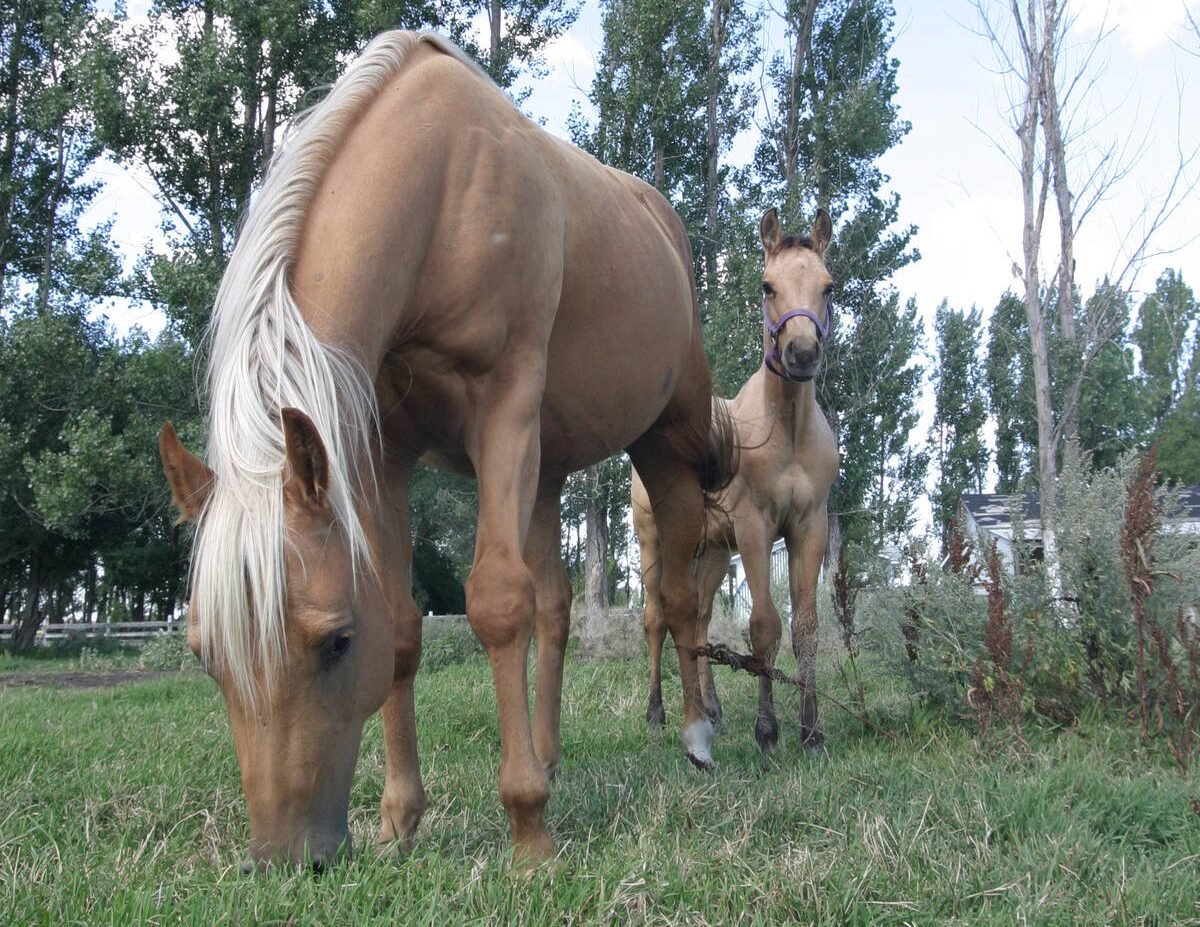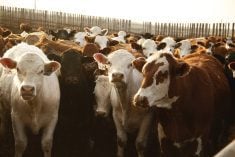Cow-calf producers have to start worrying about pinkeye now that summer has arrived.
Cattle affected with pinkeye, also known as conjunctivitis, will have an inflammation of the soft tissues surrounding the eye and eyelids. The clear surface of the eye or cornea may also be affected as the infection creates a cloudy surface or an ulcer.
Affected cattle will have reddening of the eyeball and swelling of the inner lining of the eyelid. They may also have an increased sensitivity to bright sunlight.
There will often be a discharge from the eye and excessive tearing. In many cases, these animals can be spotted from a distance by noticing the fan shaped stain of tears and discharge on the side of their face.
Read Also

Growth plates are instrumental in shaping a horse’s life
Young horse training plans and workloads must match their skeletal development. Failing to plan around growth plates can create lifelong physical problems.
Different bacterial infections can cause pinkeye in cattle, the most common one being Moraxella bovis.
Certain animals can become carriers of the Moraxella bovis bacteria, harbouring it from year to year and spreading it within herds.
The face fly is one way of spreading the bacteria between animals. Tall grass or dusty conditions may predispose the eyes to infection by causing irritation of the eyes.
The amount of exposure to ultraviolet radiation is a major predisposing factor.
Cattle with a lack of pigmentation in their eyelids may also be predisposed to pinkeye. It’s not surprising that summer is the season for pinkeye because all of the risk factors: dust, sunlight, face flies and tall grass.
The first step to dealing with pinkeye cases is to identify them early. Early treatment will speed healing and prevent blindness and permanent damage to the eye.
It is also important for producers to ensure that they are treating a typical pinkeye case. Foreign bodies such as dust, barley awns or chaff may also cause a conjunctivitis that appears similar to pinkeye.
Often only one eye will be affected, but a careful examination will reveal the presence of a foreign body such as a piece of chaff or a grain awn. Treatment will not be successful until the foreign body is removed.
Outbreaks of conjunctivitis have sometimes been seen in dusty or windy environments or where overhead feeders or self-feeders are used that expose the animal’s eyes to contact with feed material.
The bovine cornea has a remarkable ability to heal, and some cases of pinkeye can heal without treatment.
Ointments, drops, sprays and powders can treat pinkeye, but most topical treatments need to be applied three to four times a day. This isn’t practical in most situations.
Cattle are a prey species and are good at disguising when they are in pain, but pinkeye involves a great deal of inflammation around an area that has lots of nerve endings.
Make sure you don’t make it worse by putting something in their eye that causes further tissue damage or swelling.
My rule of thumb is that if you aren’t willing to put it in your own eye, don’t put it in your cow’s eye.
A traditional therapy has been to inject a small one millilitre dose of penicillin under the eye’s conjunctiva. However, this is difficult to do so many producers put the penicillin into the upper eyelid.
In theory, the penicillin will leak out of the injection over the next day or two onto the surface of the eye, but recent studies have shown that this is not effective.
I have watched producers use antibiotics other than penicillin in this manner, which may cause more damage by irritating and damaging tissue.
The safest form of therapy is an antibiotic that has a label claim for pinkeye, including long-acting antibiotics such as oxytetracyline, florfenicol and tulathromycin.
They work because they are distributed to the eye tissue or excreted in tears, even though they are injected under the skin of the neck. Consult with a veterinarian about the appropriate choice for your situation.
It may be necessary to provide protection for an animal’s cornea if the eyes are severely ulcerated. Commercial patches can be glued over the eye or a veterinarian can temporarily suture the third eyelid over the eye or suture the eyelids together.
Systemic antibiotics are usually effective treatments for pinkeye. Animals that don’t respond should be carefully examined for signs of other viral infections such as IBR or the presence of foreign bodies in the eye.
John Campbell is head of Large Animal Clinical Sciences at the University of Saskatchewan’s Western College of Veterinary Medicine.














